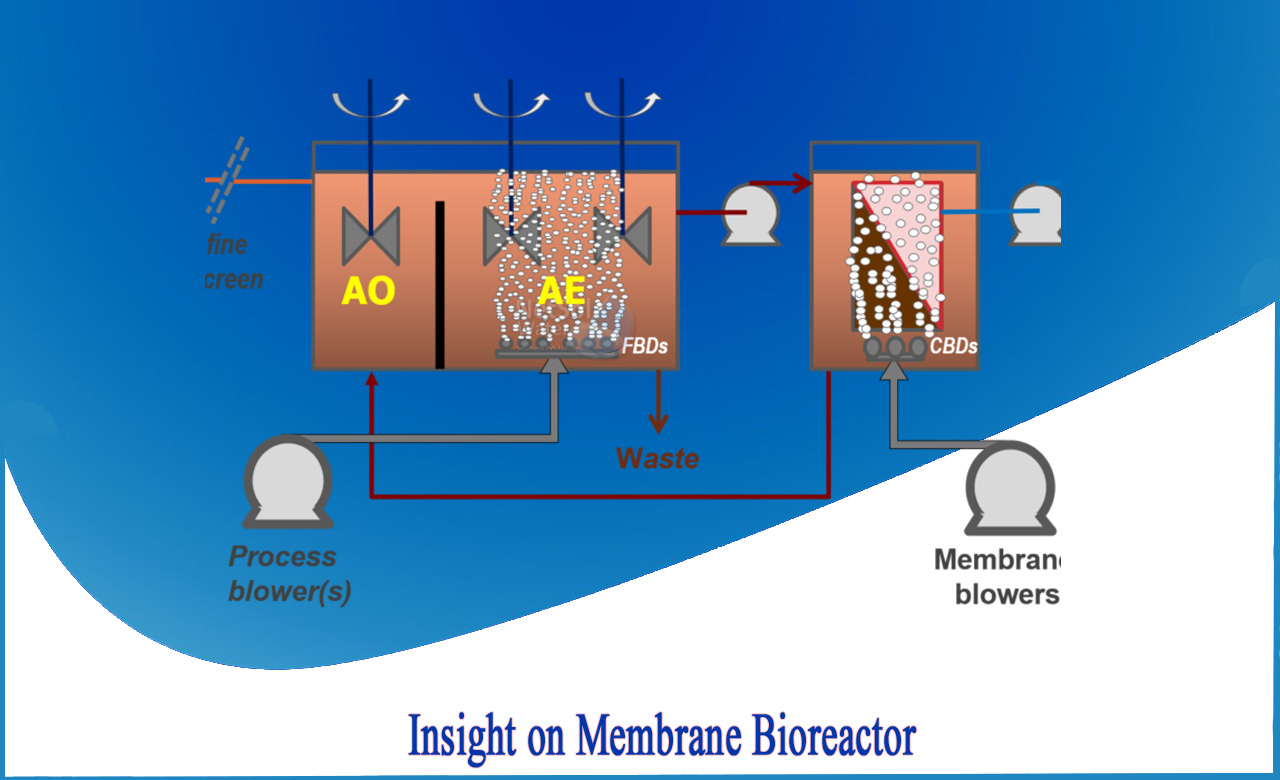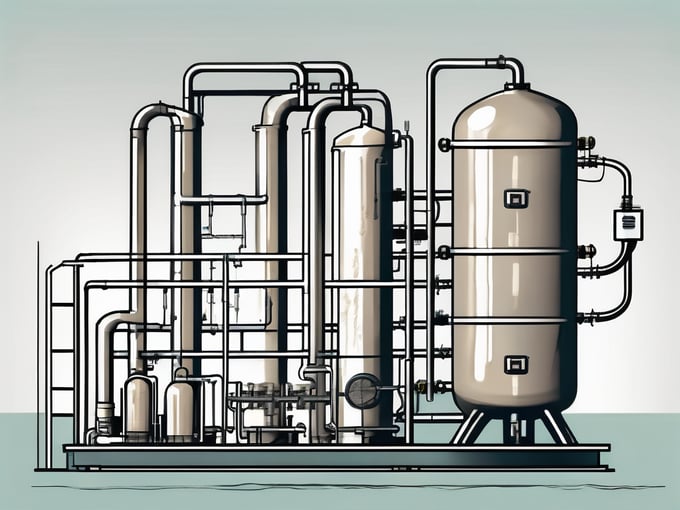Innovations in Membrane Bioreactor Technology for Enhanced Environmental Sustainability
Membrane Bioreactors Explained: Effective Solutions for Tidy Water
Membrane layer bioreactors (MBRs) have emerged as a sophisticated option for attending to the pressing obstacles of wastewater therapy - Membrane Bioreactor. By integrating biological processes with sophisticated membrane purification, MBRs not only boost the quality of cured water yet likewise minimize the spatial requirements of therapy facilities.

What Are Membrane Bioreactors?
Membrane layer bioreactors (MBRs) are sophisticated wastewater treatment systems that integrate biological degradation procedures with membrane purification modern technology. This combination enables the efficient removal of contaminants from water, making MBRs a preferred option in numerous applications, including community wastewater therapy and commercial effluent administration.

One of the critical benefits of MBRs is their ability to produce premium effluent, often suitable for reuse in watering or commercial procedures. In addition, MBRs call for a smaller impact contrasted to conventional therapy systems, making them perfect for city settings where area may be restricted.
Moreover, MBRs can successfully manage differing influent tons and are less susceptible to the impacts of toxic shocks. These features add to their growing popularity as a sustainable option for resolving the boosting need for tidy water while reducing environmental influences.
How Membrane Bioreactors Work
While the procedure of membrane layer bioreactors (MBRs) might appear facility, it essentially revolves around the synergy in between organic procedures and membrane filtration. MBRs incorporate a biological treatment procedure, usually turned on sludge, with a membrane layer splitting up unit to deal with wastewater successfully.
In an MBR system, wastewater is first introduced into a bioreactor where microorganisms degrade organic issue and various other impurities. The biological activity reduces the concentration of contaminants while promoting the development of biomass. Following this biological treatment, the mixed alcohol is subjected to membrane layer filtering, which can be microfiltration or ultrafiltration, depending upon the preferred effluent quality.
The membranes act as a physical obstacle, permitting water and small solutes to pass while preserving put on hold solids and larger molecules. This makes it possible for the system to maintain a high concentration of biomass within the reactor, improving the treatment effectiveness.
Additionally, the continuous splitting up of treated water from the biomass helps with a compact style and minimizes the footprint of the therapy center. On the whole, the mix of biological destruction and membrane layer filtration in MBRs causes reputable and efficient wastewater treatment, ensuring high-quality effluent appropriate for numerous applications.
Benefits of MBR Modern Technology
Among the key benefits of membrane bioreactor (MBR) technology is its capability to produce high-grade effluent with a substantially decreased impact contrasted to traditional wastewater treatment methods. MBR systems successfully integrate organic therapy and membrane layer filtration, resulting in superior removal of contaminants, including put on hold solids, pathogens, and raw material. This capacity results in effluent that typically meets or surpasses strict regulative criteria for reuse and discharge.
In addition, MBR innovation permits greater biomass concentrations, which boosts the therapy effectiveness and minimizes the required reactor volume. This compact design is specifically advantageous in urban areas where room is restricted. The operational adaptability of MBR systems also means they can adapt to differing influent qualities and flow prices, making them ideal for a wide variety of applications.
Furthermore, the minimized sludge production connected with MBR procedures contributes to lower operational and maintenance expenses. The membrane layers function as a physical obstacle, lessening the threat of obstructing and enabling longer operational periods between cleaning. Generally, the benefits of MBR modern technology make it more helpful hints an eye-catching remedy for lasting wastewater therapy, attending to both ecological problems and the demand for efficient resource monitoring.
Applications of Membrane Layer Bioreactors
With their flexibility and effectiveness, membrane layer bioreactors (MBRs) discover applications across different industries, including community wastewater treatment, industrial processes, and also water recovery. In metropolitan setups, MBRs supply a portable solution for dealing with wastewater, properly getting rid of pollutants while all at once generating high-grade effluent that fulfills rigid regulative standards. This makes them particularly ideal for locations with restricted space.
In commercial why not try here applications, MBR modern technology is used for treating procedure water, especially in industries such as food and drink, drugs, and petrochemicals. These industries take advantage of MBRs' capacity to deal with high organic lots and their efficiency in recovering beneficial sources from wastewater, such as nutrients and water.
Additionally, MBRs play an essential role in water recovery efforts, enabling the reuse of dealt with wastewater for irrigation, commercial processes, and even as drinkable water after further therapy (Membrane Bioreactor). Their effectiveness in removing toxins and microorganisms makes them a reputable choice for making sure water quality in numerous reuse applications
Future of Water Treatment Solutions
The future of water therapy solutions is poised for transformative advancements driven by technological technology and boosting ecological understanding. As international water scarcity comes to be a pressing problem, brand-new approaches, consisting of membrane layer bioreactor (MBR) systems, are set to play a crucial role in improving the performance and sustainability of water treatment processes.
Arising modern technologies such as synthetic knowledge and artificial intelligence are anticipated to maximize therapy operations, permitting real-time surveillance and anticipating maintenance. This will enhance the general integrity and effectiveness of water therapy centers. Furthermore, developments in membrane layer products, such as graphene and nanofiltration, assure to raise permeation rates and reduce fouling, resulting in reduced power intake and functional prices.
Additionally, the integration of renewable resource resources into water treatment plants will certainly add to greener methods. The circular economy version will certainly likewise gain grip, urging the healing of important resources from wastewater, such as nutrients and power.
Final Thought

Membrane bioreactors (MBRs) have arised as an innovative service for attending to the pushing obstacles of wastewater therapy. By integrating organic procedures with advanced membrane layer filtering, MBRs not only boost the quality of cured water but likewise reduce the spatial demands of therapy facilities.One of the vital advantages of membrane bioreactor (MBR) modern technology is its ability to create top quality effluent with a significantly lowered footprint compared to standard wastewater treatment techniques.With their convenience and efficiency, membrane bioreactors (MBRs) locate applications throughout various markets, consisting of municipal wastewater treatment, commercial procedures, and even water reclamation.In published here final thought, membrane layer bioreactors stand for a significant improvement in wastewater therapy technology, integrating biological processes with reliable membrane layer purification to create top notch effluent.